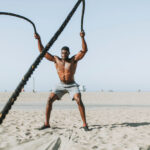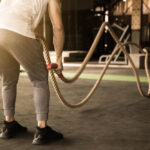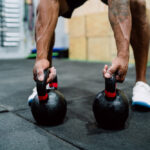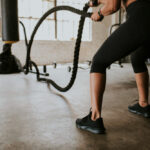If you’re serious about getting strong with just your bodyweight, resistance bands should be in your toolkit. Whether you’re struggling to crank out one clean pull-up or trying to squeeze more gains out of your muscle-ups, bands can make a huge difference. This guide will break down how beginners can combine calisthenics and resistance bands to build up strength, and how more advanced athletes can use them to smash through plateaus.
Why Combine Calisthenics and Resistance Bands?
First off, bands fix one of the biggest problems in calisthenics: uneven strength curves. Some parts of a movement are way harder than others (like getting out of the bottom of a pull-up). Bands help smooth that out so you can train the whole range properly.
Second, bands make hard moves doable. Can’t do a strict dip yet? Strap in a band, and now you can work the right muscles without just flailing.
Third, for experienced people, bands add intensity. Loop a band around your back during push-ups or squats, and suddenly the move is 2x harder. They’re not just for scaling down, they’re also for scaling up.
How Beginners Should Use Resistance Bands
If you’re just starting calisthenics, bands are your best training partners. Here’s how to use them right:
- Start with Big Compound Moves: Focus on assisted pull-ups, dips, and push-ups. These build the base strength you need everywhere else.
- Pick the Right Tension: Too thick, and you’re barely doing any work. Too thin, and you’re grinding in bad form. You want a band that challenges you but still lets you complete real reps with clean technique.
- Dial In Your Form Early: Bands can trick you into getting sloppy, don’t let them. Every rep should look like the unassisted version you’re aiming for.
- Progress Wisely: As you get stronger, swap to thinner bands, not all at once, but gradually. Think of it like peeling layers off an onion until you’re lifting your real bodyweight with no help.
- Don’t Rush Ditching the Band: It’s better to master a move with a lighter band first than to “muscle” through ugly reps with no band. Quality reps beat ugly reps every time.
How Experienced Athletes Should Use Resistance Bands
If you’re already banging out clean pull-ups and dips, don’t toss the bands aside… Use them to make your training harder and smarter.
Here’s how:
- Add Resistance to Basic Moves: Wrap a band around your back during push-ups, dips, or even handstand push-ups. Instant extra load without needing a weighted vest. Plus, the band’s tension increases at the hardest part of the move, exactly where you want it.
- Train Explosiveness: Bands don’t just add weight, they snap you through the movement. Use a light band assisting pull-ups or muscle-ups to teach your body to move faster and more explosively, which is crucial for advanced skills.
- Pre-fatigue Sets: Before you hit bodyweight sets, use bands to pre-fatigue muscles. Example: high-rep banded push-ups before hitting heavy dips. These torches stabilize and push strength endurance through the roof.
- Isolation Work: Bands are perfect for focused accessory exercises. Moves like banded face pulls for shoulder health or banded triceps extensions after dips.
Common Mistakes to Avoid
Even though bands are simple, people screw up with them all the time. Avoid these rookie mistakes:
- Relying Too Much on the Band: If you’re just mindlessly bouncing up during pull-ups or dips, you’re not building real strength. The goal is progressive overload, not just making it easy forever.
- Choosing the Wrong Band Tension: Too heavy = you coast through the movement without working. Too light = you can’t complete clean reps. Adjust the tension based on the exercise and your goal.
- Bad Setup: If the band isn’t secured properly, you’ll end up fighting the band instead of focusing on good technique. Always set it up safely and centered.
- Skipping Progression Steps: Don’t get cocky and ditch the band too early. You’ll develop bad habits, cheat reps, and plateau faster. Master each stage, the thicker band, the medium band, and then the thin band before going solo.
- Ignoring Form: Assisted doesn’t mean “sloppy.” Train like you’re already strong. Perfect form under assistance becomes perfect form without it.
Even though you can do these exercises at home, treat yourself with a 3-day free pass at our Lake City gym, and exercise in a professional setting.
Final Thoughts
Resistance bands aren’t just beginner tools, they’re smart training weapons for every stage of your calisthenics journey. Whether you’re grinding toward your first pull-up or leveling up your handstand push-ups, bands help you train harder, cleaner, and smarter.





